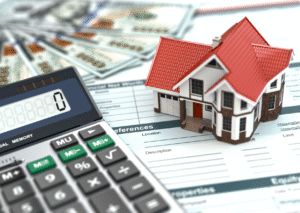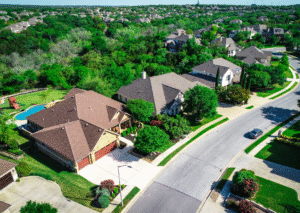What Are Construction-to-Permanent Loans?
Construction-to-permanent loans are unique financing solutions that combine two types of real estate funding into one streamlined process. Instead of securing a separate construction loan and then refinancing into a traditional mortgage, this loan wraps both stages into a single package.
This hybrid structure provides convenience and cost efficiency, allowing borrowers to lock in interest rates early and avoid multiple closings. It’s a preferred option for individuals or investors building a custom home or rental property from the ground up.
These loans are particularly valuable in today’s high-demand market where minimizing delays, costs, and risk is crucial.
How Does the Two-Phase Structure of These Loans Work?
The loan structure unfolds in two stages:
- Construction Phase: Funds are disbursed incrementally to cover labor and material costs. Typically, the borrower pays interest-only during this stage.
- Permanent Phase: Once construction is completed and approved, the loan converts to a traditional long-term mortgage (usually 15–30 years), requiring full principal and interest payments.
This structure reduces paperwork and financial uncertainty. You only apply once, undergo one underwriting process, and lock in one interest rate. For real estate investors and developers, this loan structure helps maintain consistency in project timelines and budgets, critical components of portfolio growth.
Who Should Consider Construction-to-Permanent Loans?
Construction-to-permanent loans are best suited for:
- Real estate investors developing rental or multi-family properties
- Owner-builders constructing their primary residence
- Developers working on pre-sold or spec home builds
- Buy-and-hold strategists using construction as a path to long-term passive income
For investors aligned with the BRRRR (Buy, Rehab, Rent, Refinance, Repeat) strategy, this type of financing can substitute the “rehab” portion with new construction, yielding modern units built to code, minimizing maintenance costs, and potentially commanding higher rents.
What Are the Key Benefits of Construction-to-Permanent Loans?
There are several notable advantages to using this type of loan:
- Single Closing: One set of closing costs instead of two.
- Locked-In Interest Rate: Prevents surprises during construction.
- Predictable Process: Easier project planning and financial modeling.
- Streamlined Underwriting: Less paperwork and fewer lender approvals.
- Cash Flow Stability: Interest-only payments during construction phase.
Additionally, this loan can serve as a complement to other offerings like DSCR loans (Debt-Service Coverage Ratio loans), which prioritize property income over borrower income—a great fit for real estate investors aiming for long-term rentals.
What Are the Eligibility Requirements?
Eligibility for construction-to-permanent loans often includes:
- Detailed Construction Plan: Architectural blueprints, permits, and builder contracts.
- Strong Credit Profile: Most lenders look for credit scores of 680 or higher.
- Proof of Income and Assets: Including reserves for unexpected costs.
- Down Payment: Typically 10–20% of total construction cost.
- Licensed Builder Approval: The lender must approve the general contractor.
Real estate financing partners like No Limit Investments often assist borrowers in navigating these requirements through credit & debt advisory services and growth & development support, making the process more accessible even for first-time developers.
How Do These Loans Compare to Other Real Estate Financing Options?
Here’s a comparison with other common loan types:
- Fix & Flip Loans: Designed for short-term renovation projects. Construction-to-permanent loans, on the other hand, are more suitable for ground-up builds and long-term holdings.
- Buy & Hold Mortgages: Ideal for purchasing existing rental properties, whereas construction-to-perm loans are tailored to build-and-hold strategies.
- Cash-Out Refinance: Useful post-construction to access equity but requires initial financing, which construction-to-perm already provides upfront.
- DSCR Loans: Based on rental income rather than borrower’s personal income, making them complementary for the long-term phase of a construction-to-perm strategy.
If you’re scaling a portfolio, pairing construction-to-perm loans with business credit facilities can offer the capital structure needed to take on multiple builds without over-leveraging personal assets.
What Risks or Challenges Should Borrowers Be Aware Of?
Despite the advantages, construction-to-permanent loans come with certain risks:
- Construction Delays: Weather, labor shortages, or permit issues can derail timelines.
- Cost Overruns: Material price spikes or unforeseen challenges can push budgets higher.
- Loan Conversion Conditions: If inspections or timelines aren’t met, the permanent phase may not activate smoothly.
- Stricter Lender Requirements: These loans often require more documentation and oversight than a standard mortgage.
Working with experienced lenders and advisors, such as those at No Limit Investments, can help anticipate these challenges early on.
How Can Investors Use Construction-to-Permanent Loans for Long-Term Wealth Building?
This loan type supports long-term strategies such as:
- Creating Rental Inventory: Build modern multi-family or single-family units that generate consistent rental income.
- Executing BRRRR at Scale: Use construction in place of rehab, then refinance or hold.
- Geographic Expansion: Build in high-growth neighborhoods or up-and-coming cities to capitalize on equity appreciation.
- Portfolio Diversification: Add new-build properties with fewer maintenance issues to stabilize long-term returns.
For example, pairing construction-to-permanent loans with BRRRR financing, and later opting for a cash-out refinance, can help fund the next property without relying on traditional savings.
How Can You Get Started with Construction-to-Permanent Financing?
Getting started includes:
- Identifying Your Goal: Determine if the property is for sale, rent, or personal use.
- Choosing a Builder: Secure a licensed and reputable contractor.
- Preparing Financials: Gather credit reports, income statements, and reserve documentation.
- Working with a Specialized Lender: Partner with firms like No Limit Investments that understand construction timelines, investor goals, and local market dynamics.
No Limit Investments offers a full suite of real estate financing solutions, including new construction loans, tailored underwriting, and growth-focused advisory. Whether you’re a seasoned investor or just breaking ground, they provide the tools and expertise to support your journey from blueprint to rental income.
Why Should You Work with No Limit Investments?
At every stage of your construction-to-permanent journey, No Limit Investments can help simplify the financing and maximize your returns.
Here’s what they bring to the table:
- Fix & Flip Loans for value-add strategies
- Buy & Hold Mortgages for long-term passive income
- BRRRR Financing for scalable property acquisition
- Cash-Out Refinance Options to unlock equity
- DSCR Loans to qualify based on rental performance
- New Construction Loans to build from the ground up
- Business Credit Facilities to empower your enterprise
- Credit & Debt Advisory Services to support financial clarity
- Growth & Development Services to scale your portfolio wisely
They are not just a lender, they are a strategic financing partner built for investors who want to grow smart and fast.
Final Thoughts
Construction-to-permanent loans offer a powerful way to simplify complex real estate deals, minimize friction between phases, and enable smoother access to long-term wealth-building opportunities. With just one application, one closing, and one lender relationship, this loan structure is ideal for investors who want to build, hold, and scale.
By working with seasoned professionals like No Limit Investments, investors gain more than funding, they gain a roadmap to sustainable success.
Works Cited
- Consumer Financial Protection Bureau. “What Is a Construction Loan?” CFPB, www.consumerfinance.gov/ask-cfpb/what-is-a-construction-loan-en-1709/. Accessed 13 Oct. 2025.
- U.S. Department of Housing and Urban Development. “Single Family Housing Policy Handbook.” HUD.gov, www.hud.gov/program_offices/housing/sfh/handbook_4000-1. Accessed 13 Oct. 2025.
- National Association of Home Builders. “Custom Home Building Statistics.” NAHB.org, www.nahb.org. Accessed 13 Oct. 2025.
- Fannie Mae. “Understanding Construction-to-Permanent Financing.” FannieMae.com, www.fanniemae.com. Accessed 13 Oct. 2025.
- No Limit Investments. “Services.” nolimitinvestments.net/services. Accessed 13 Oct. 2025.
Frequently Asked Questions:
- What is a construction-to-permanent loan?
It’s a single-loan solution that finances both the construction of a property and converts into a permanent mortgage after completion, eliminating the need for multiple closings. - How does a construction-to-perm loan differ from a traditional construction loan?
Traditional construction loans require refinancing into a separate mortgage after the build. Construction-to-perm loans combine both into one process. - Who should consider using this loan type?
Real estate investors, developers, and anyone planning to build and keep a property for the long term—especially those using BRRRR or buy & hold strategies. - Can I use this loan for rental properties?
Yes. These loans are ideal for creating rental inventory and can be paired with DSCR or buy & hold strategies to build long-term income. - How can No Limit Investments help with construction-to-perm loans?
No Limit Investments offers new construction loans, credit advisory, and full-scale financing solutions that align with your growth strategy.







